+977 9841319155

Dashain Festival: The biggest celebration of Nepal
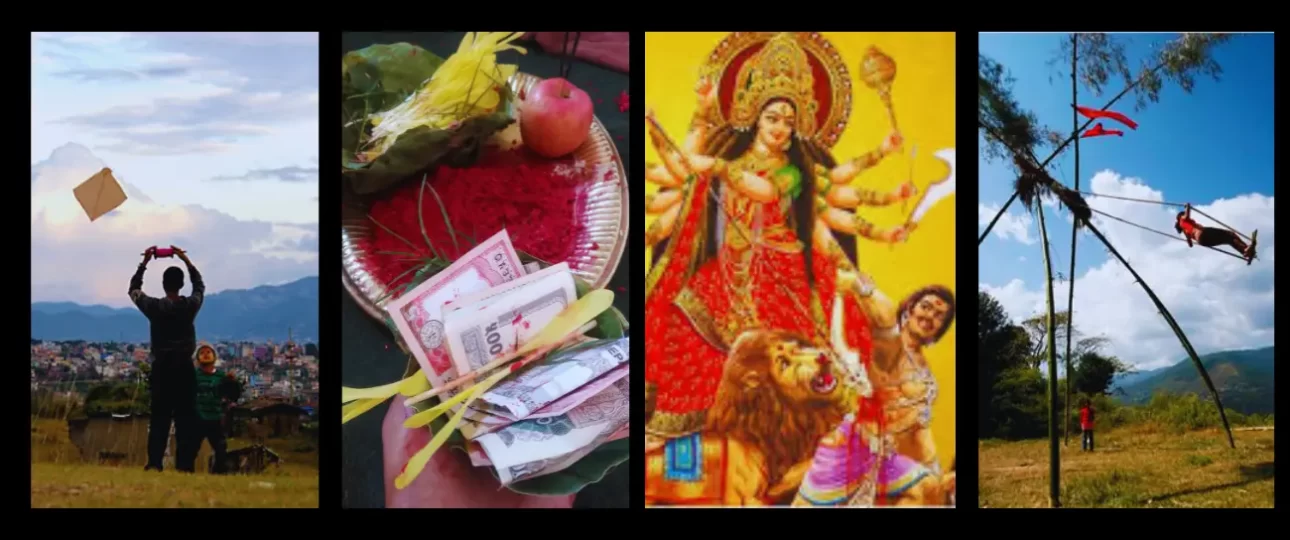
Dashain festival, also known as Vijaya Dashami, is the largest and most significant festival in Nepal, celebrated by Hindus across the country and among the Nepali diaspora worldwide. This 15-day festival typically falls between late September and mid-October, marking the triumph of the goddess Durga over the demon Mahishasura, symbolizing the victory of good over evil. The festival is not only a time for religious observance but also a period for family reunions, cultural celebrations, and social bonding.
Dashain commemorates the victory of Goddess Durga over the demon Mahishasura, symbolizing the triumph of good over evil. According to ancient texts, the demon Mahishasura had become powerful and invincible, terrorizing the gods. In response, Goddess Durga , a powerful incarnation of Shakti, was created to destroy him.
This fierce battle lasted nine days, culminating in Durga’s victory on the tenth day, known as Vijaya Dashami. This victory of Goddess Durga symbolizes the eternal fight between good and evil, truth and falsehood. Dashain teaches us that no matter how strong evil becomes, righteousness will always prevail.
The festival’s roots can also be traced to the epic Ramayana, where Lord Ram defeats the demon king Ravana. This duality of narratives—Durga’s battle against Mahishasura and Ram’s struggle against Ravana—highlights the overarching theme of righteousness prevailing against malevolence.
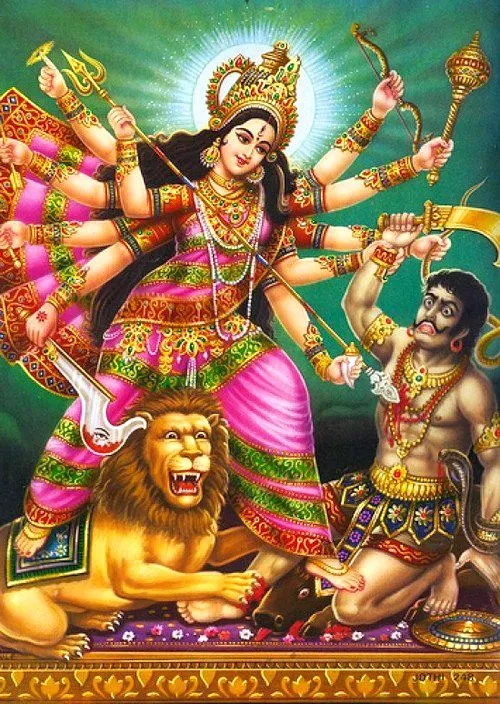
How is Dashain Celebrated in Nepal?
The preparations for Dashain start weeks before the actual festival begins. It’s a time of great excitement as households are busy with various activities to ensure they are ready for the grand celebrations. Preparations typically involve cleaning, decorating, shopping, and planning family gatherings.
Cleaning and Decorating the House
One of the first steps in preparing for Dashain is thoroughly cleaning and decorating the house. Nepali families believe that the goddess Durga visits clean and pure homes, so houses are scrubbed from top to bottom. This is also symbolic of welcoming new energy, prosperity, and blessings into the home.
During Dashain, many homes are decorated with traditional items such as flowers, leaves, and vibrant fabrics. People also hang garlands made from marigold flowers, considered sacred in Hindu culture. Additionally, many households set up a sacred space, called a puja room, where religious rituals will be performed throughout the festival.
Buying New Clothes and Gifts
Dashain is a time of renewal, and buying new clothes is an important part of the celebration. New clothes symbolize new beginnings, and everyone, from children to the elderly, purchases new outfits for the occasion. This is one of the highlights of Dashain for children, who eagerly look forward to showing off their new clothes to friends and relatives.
In addition to clothing, people also buy gifts for their family members. These gifts, ranging from sweets and fruits to more valuable items, are exchanged during family gatherings as tokens of love and appreciation.
Family Reunions
Dashain is primarily about family gatherings. The festival serves as a time for individuals who have migrated for work or education to return home and reconnect with their loved ones. The joy of being together under one roof during this auspicious time creates an atmosphere filled with warmth and affection.
Kite Flying
Kite flying is a popular activity during Dashain, symbolizing joy and community spirit. It is believed that flying kites sends a message to the rain god to cease rainfall during this festive period.
As the festival approaches, the skies above Nepal become a canvas painted with colorful kites of various shapes and sizes. Children and adults alike often gather on rooftops or open spaces, competing to cut each other’s kite strings while shouting “Changā chet!”—a phrase used to celebrate a successful cut. This friendly rivalry enhances community bonds as neighbors cheer each other on.

Bamboo Swings (Ping)
Another cherished tradition during Dashain is the construction of bamboo swings known as “ping.” These swings are typically erected in open spaces or community areas and are made using traditional methods involving bamboo sticks and ropes crafted from tough grass. It is believed that one must leave the ground once a year by riding the swing in the Dashain festival.
Historically rooted in Nepalese culture, bamboo swings have been associated with various festivals for centuries. Their connection to Hindu mythology, particularly the shape reminiscent of the Shiva Linga, adds a spiritual dimension to the activity. Swinging is seen as a way to connect with divine energies and seek blessings for health and prosperity in the coming year.
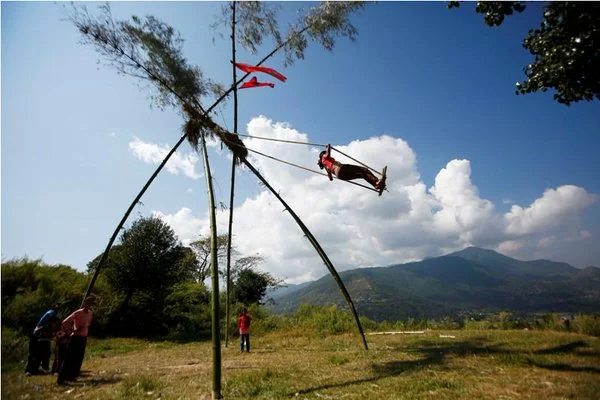
Though often illegal, friendly gambling games are popular during Dashain as families gather to enjoy card games together. While children are busy flying kites, older family members often indulge in card games during Dashain. These gatherings provide an opportunity for adults to socialize, reminisce about past experiences, and enjoy friendly competition.
Phases of Dashain
Each of the 15 days of Dashain holds religious and cultural significance, and different rituals are performed on each day. The most important days are Ghatasthapana (the first day), Phulpati (the seventh day), Maha Ashtami (the eighth day), Maha Navami (the ninth day), and Vijaya Dashami (the tenth day).
15 Days Dashain Festival Timeline
Ghatasthapana (Day 1): The festival begins with the establishment of a sacred pot (kalash) filled with holy water and barley seeds.
Fulpati (Day 7): Sacred flowers and plants are brought to homes as part of the celebrations.
Maha Ashtami (Day 8): This day involves significant rituals including animal sacrifices to honor Goddess Durga.
Maha Navami (Day 9): A continuation of worship and offerings.
Vijaya Dashami (Day 10): The most important day where families gather to receive blessings through Tika (a mixture of yogurt, rice, and vermilion).
Kojagrat Purnima (Final Day): The festival concludes with family visits and final rituals.
What are the main rituals performed during Dashain?
Ghatasthapana: The First Day of Dashain
The festival officially begins with Ghatasthapana, which translates to “planting of the sacred jar.” On this day, a pot (ghata) filled with holy water is placed in a prayer room, symbolizing the goddess Durga. This is a sacred ritual that marks the beginning of the festival.
The household’s most senior female member takes responsibility for this ceremony. Barley seeds are also planted in a sand-filled pot alongside the water jar. The seeds are allowed to sprout into Jamara, yellow-green barley shoots, which will be used in rituals on the tenth day of Dashain, known as Vijaya Dashami. These sprouts symbolize fertility, prosperity, and the blessing of the goddess.
During Ghatasthapana, prayers are recited, and from this day onward, worshipers pay daily homage to the goddess Durga by offering flowers, fruits, and other items until the final day.
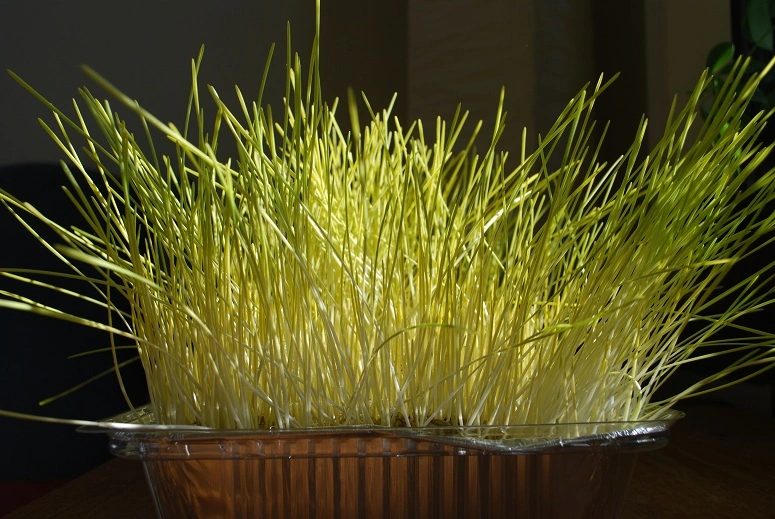
Phulpati: The Sacred Day
Phulpati, the seventh day of Dashain, is when sacred flowers, leaves, and fruits are carried to various temples, especially in Kathmandu, where they are used in ceremonial offerings. The term Phulpati combines two words: phul (flower) and pati (leaves), both of which are integral to the worship rituals.
The highlight of this day is the Phulpati procession, a grand event that begins at Gorkha and makes its way to the capital. Government officials, soldiers, and citizens all participate in this ceremonial march. In the Kathmandu Valley, it’s a day of great celebration, and families gather for feasts and socializing.
Maha Ashtami and Sacrifice Rituals
Maha Ashtami, the eighth day of Dashain, is one of the most intense and revered days. On this day, people worship Kali, the fearsome form of Goddess Durga, who is associated with destruction. This day is particularly important for its animal sacrifice rituals.
Throughout Nepal, goats, buffaloes, ducks, and other animals are sacrificed as an offering to the goddess. The blood of the sacrificed animals is considered pure and is believed to please the goddess, ensuring her protection for the year ahead. Although the practice of sacrifice is controversial, it is a tradition followed by many families and communities.
The sacrificed animals are prepared and shared as a meal with family members, marking the unity of the occasion.
Maha Navami
Continuation of Worship: Similar to Maha Ashtami, this day involves further worship and sacrifices. It is also a day for honoring tools and vehicles, where people pray for protection against accidents in their daily lives.
Vijaya Dashami: The Main Day
The tenth day, Vijaya Dashami, is the most important and highly anticipated day of Dashain. It is the day when Goddess Durga achieved victory over the demon Mahishasura, and as a symbol of this victory, family members receive Tika and Jamara from their elders.
The Tika, a mixture of rice, yogurt, and red vermilion, is placed on the forehead while elders offer their blessings for prosperity, health, and success. The Jamara (barley sprouts) are placed behind the ears or on the head. This symbolic act represents the transfer of blessings from the older generation to the younger, and it fosters strong familial bonds.
This day is filled with joy, laughter, and reunions, as family members who live far away return home to receive blessings from their elders. The younger generation also receives Dakshina, monetary gifts, from their elders, adding to the festivity.
The ritual of Tika and Jamara continues for five days after Vijaya Dashami, during which time people visit extended family and friends to exchange blessings and celebrate together.
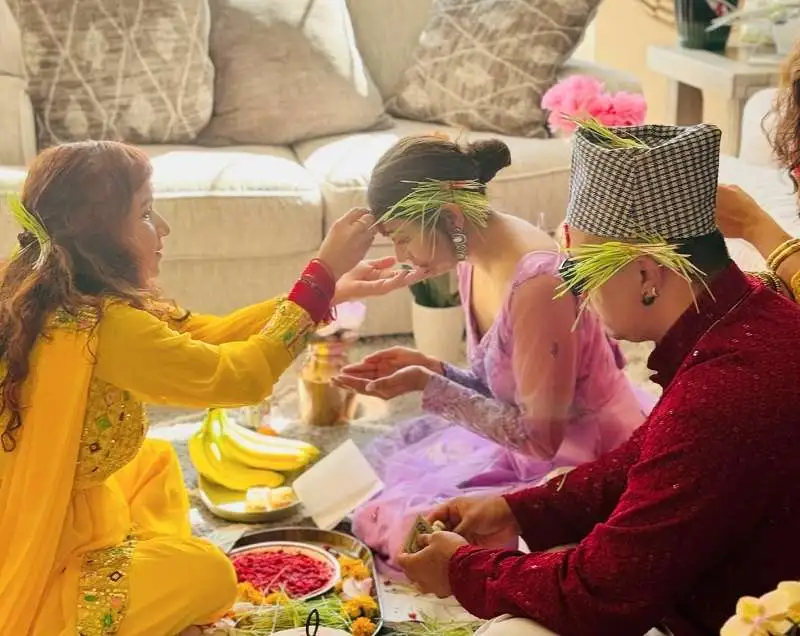
Final Day: Kojagrata Purnima
Worship of Goddess Laxmi: The festival concludes on Kojagrata Purnima, when people worship Goddess Laxmi, seeking wealth and prosperity. It is believed that she visits homes on this night.
Importance of Tika and Jamara in Dashain
Tika and Jamara hold deep spiritual significance in the Dashain festival.
On Vijaya Dashami, family members gather to receive Tika, which is a mixture of rice, yogurt, and vermilion powder applied to the forehead. This act is not merely ceremonial; it is a way for elders to bestow blessings of happiness, prosperity, and health upon the younger generation.
The red Tika represents the divine blood of the goddess Durga and serves as a protective mark for the individual receiving it. This mark is believed to safeguard the individual from misfortune and evil throughout the year.
Alongside Tika, Jamara—sprouted barley or maize—is also presented during the ceremony. Jamara represents life, fertility, and prosperity. Its presence in the Tika ceremony enhances the blessings being conferred and signifies the growth and good fortune that families hope to cultivate in the coming year.
The tradition of applying Tika extends beyond Vijaya Dashami; it continues until Kojagrat Purnima (the fifteenth day), allowing for extended familial interactions and blessings throughout the festival period.
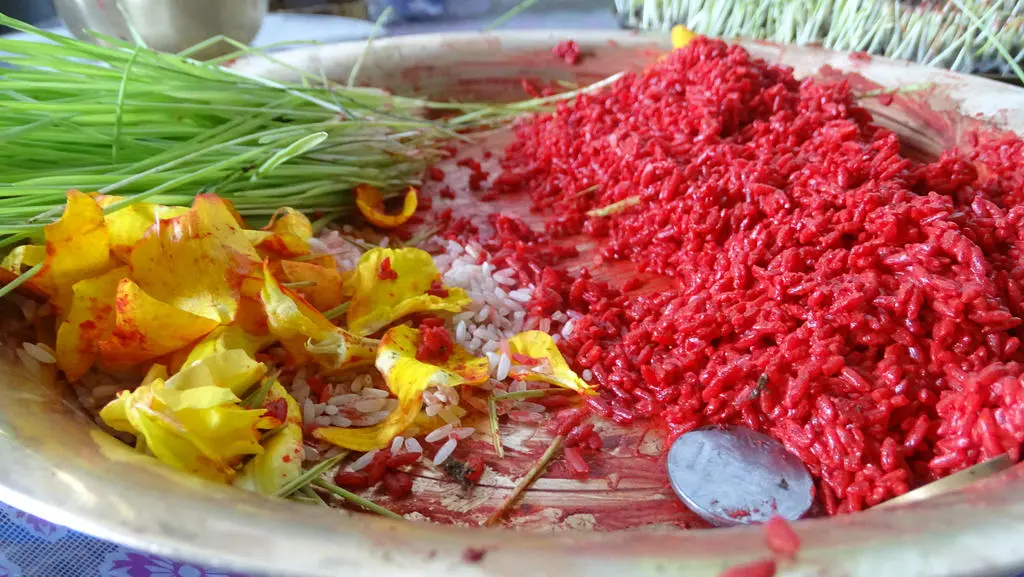
Dashain Celebrations Across Different Ethnic Groups
Nepal is a diverse country with over 125 ethnic groups, each with its unique cultural traditions, languages, and practices. While Dashain is celebrated across the nation, the way it is observed varies widely from group to group.
Each ethnic community brings its own flavor and customs to the festival, enriching the experience of Dashain with regional and cultural differences. Despite these variations, the underlying themes of family, prosperity, and the triumph of good over evil remain universal.
Among the Brahmin and Chhetri communities, Dashain is marked by deep religious observances. Rituals such as Ghatasthapana, the sowing of barley seeds symbolizing prosperity, and daily prayers to Goddess Durga are central. These families emphasize receiving blessings through the Tika and Jamara ceremonies and often engage in animal sacrifices, which are followed by lavish family feasts.
In contrast, the Newar community, indigenous to the Kathmandu Valley, blends Hindu and Buddhist elements into their celebrations. While they also revere Goddess Durga, the Newars incorporate local deities into their worship and engage in unique feasting traditions, with dishes like Choila and Yomari.
For the Tamang people, who are primarily Buddhist, Dashain is less about religious devotion and more about honoring ancestors. Tamang families create altars for their ancestors, combining Buddhist rituals with symbolic participation in Tika and Jamara ceremonies.
The Magar people, an indigenous group in Nepal, celebrate Dashain with a strong connection to the harvest season. Their rituals focus on giving thanks for agricultural abundance, and their celebrations are often communal, with village-wide gatherings for feasting and dancing.
The Tharu community, primarily residing in the Terai region, also incorporates a nature-centric focus into their Dashain celebrations. Animal sacrifices, communal feasts, and honoring local nature spirits are key elements of their observances.
Meanwhile, the Sherpa community, although largely Buddhist, partakes in Dashain as a cultural event, focusing on family gatherings, ancestor worship, and strengthening familial bonds.
While the specific rituals and customs vary widely among these groups, Dashain remains a unifying force across Nepal. It brings together communities from different cultural backgrounds, fostering a sense of unity through shared values of family, renewal, and celebration of life’s blessings.
Trekking in Nepal during Dashain
Trekking in Nepal during Dashain offers a unique and enriching experience, as the festival coincides with the peak trekking season in October. This period not only provides excellent weather and trail conditions but also allows trekkers to immerse themselves in the vibrant festive atmosphere of Nepal.
Dashain, Nepal’s biggest festival, transforms the trekking experience into something truly special. The country is abuzz with celebrations, and trekking during this time allows visitors to witness and partake in these festive activities. The trails are bustling with both local and international trekkers, making it a lively and dynamic time to explore Nepal’s renowned trekking routes.
If you trek to the western regions of Nepal, such as Annapurna Base Camp or Ghorepani Poon Hill, you will have the opportunity to celebrate Dashain with the locals. These areas are not only popular for their stunning natural beauty but also for their cultural richness. During Dashain, you might find local communities engaged in traditional celebrations, including the Tika ceremony, where elders bless younger family members with Tika and Jamara (barley shoots).
In addition to international trekkers, many domestic travelers also venture out into the hills and mountains during Dashain. For Nepalese trekkers, this period is a perfect opportunity to combine their love for trekking with the festive celebrations. The trails are lively, and trekkers of all backgrounds come together to enjoy the festival and the natural beauty of the Himalayas.
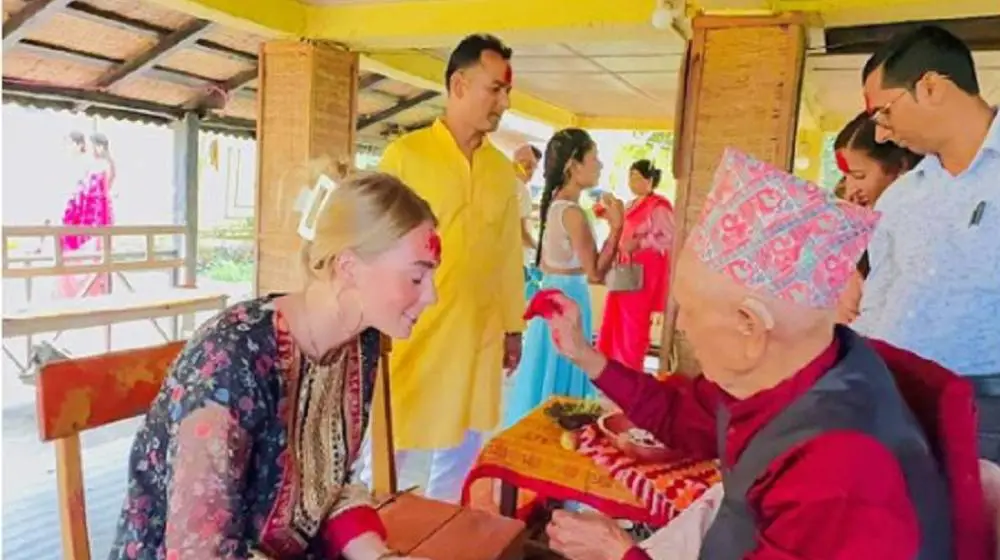
Dashain transcends mere religious observance; it embodies the essence of Nepali culture through its emphasis on family unity, respect for traditions, and celebration of life. As one of the longest public holidays in Nepal, it serves as a reminder of cultural heritage while promoting social harmony among its people. The festival not only reflects spiritual beliefs but also highlights the importance of community and familial bonds that are integral to Nepali society.
Why is Dashain considered the biggest festival in Nepal?
Dashain is considered the biggest festival because of its nationwide celebration, cultural significance, and the fact that it lasts for 15 days, involving family reunions, religious rituals, and social bonding.
What is the significance of Tika and Jamara in Dashain?
Tika and Jamara symbolize the blessings of Goddess Durga, offering protection, prosperity, and longevity to those who receive them.
How long does the Dashain festival last?
Dashain lasts for 15 days, with each day carrying its own significance, though the major celebrations happen on the tenth day, known as Vijaya Dashami.
What kind of food is traditionally prepared during Dashain?
Traditional foods include meat dishes like mutton and chicken, rice, lentils, and various sweets and delicacies like sel roti and rice pudding (kheer).
How does Dashain promote family bonding?
Dashain is a time when families come together to celebrate, perform rituals, and receive blessings from elders, making it a perfect occasion for family bonding.
Your email address will not be published. Required fields are marked *
Nepal Peak Adventure
Nepal Peak Adventure stands as a premier trekking and travel agency dedicated to curating exceptional and memorable journeys in the heart of the Himalayas.

Trekking & Climbing
- Everest Region
- Annapurna Region
- Langtang Region
- Manaslu Region
- Dolpo Region
- Short Treks
- Beginner's Level Climbing
- Intermediate Level Climbing
- Challening Level Climbing
- Legal Documents
- Trekking Guides
- Climbing Guides
- Celebration
Bhagwan Bahal Street, Thamel, Kathmandu- Nepal
What’s App: +977 9841319155
+(977) 9841319155

- Terms & Conditions
- Privacy Policy
Untuk bantuan silakan, Klik disini
- Pesanan Saya
- Wishlist dan Toko yang Saya Ikuti
- Ulasan Saya
- Pengembalian & Pembatalan

- Peralatan Elektronik
- Aksesoris Elektronik
- Fashion & Aksesoris Wanita
- Fashion & Aksesoris Pria
- Fashion & Aksesoris Anak
- Kesehatan & Kecantikan
- Bayi & Mainan
- TV & Elektronik Rumah
- Keperluan Rumah & Gaya Hidup
- Kebutuhan Rumah Tangga
- Olahraga & Outdoor
- Laptop Consumer
- Laptop Gaming
- Laptop 2-in-1s
- Komputer Rakitan
- Kamera Mirrorless
- Kamera Pocket
- Kamera Aksi
- 360 Cameras
- Kamera CCTV
- Video Camera
- Kamera Instan
- Gaming Konsol
- Permainan Konsol
- Pengontrol Game Konsol
- Konsol Pelindung Penutup
- Aksesoris Game Konsol
- Media Player
- Walkie-Talkie
- Kabel Handphone
- Charger Handphone
- Casing Handphone
- Pelindung Layar
- Phone Holder
- Baterai Handphone
- Peralatan & Suku Cadang
- Aksesoris Handphone Lainnya
- Keyboard Komputer
- Adaptor Jaringan
- Adaptor & Kabel
- Adaptor Baterai Komputer
- Cooling Pads
- Headphone & Headset
- Speaker Portabel
- Speaker Smart
- Aksesoris Smartwatch
- Activity Tracker
- Aksesoris Fitness Tracker
- Virtual Reality
- Kendali Gerakan
- Kacamata Pintar
- Tripod & Monopod
- Kartu Memori
- Lensa Kamera
- Sarung, Pelindung & Tas Kamera
- Charger Kamera
- Baterai Kamera
- Aksesoris Kamera Aksi
- Aksesoris Kamera Instan
- Perlengkapan Lighting & Studio
- Flash Drive
- Harddisk Eksternal
- Hard Drive Internal
- Internal SSD
- Eksternal SSD
- Tinta Printer
- Printer POS & Thermal
- Mesin Cutting Sticker
- Memori Printer
- Casing Tablet
- Keyboard Tablet
- Pen Stylus Tablet
- Motherboard
- Kartu Grafis
- Casing Komputer
- Power Supply Unit
- Front Panel
- Water Cooling System
- Sweater & Cardigan
- Celana & Legging
- Jaket & Mantel
- Kaus Kaki & Celana Ketat
- Celana Pendek
- Jumpsuit & Playsuit
- Hoodie & Sweatshirt
- Perlengkapan Shalat
- Atasan Muslimah
- Baju Muslim & Jumpsuit
- Bawahan Muslim
- Luaran Muslim
- Aksesoris Muslim
- Baju Renang Muslim
- Baju Kurung
- Celana Dalam
- Baju Tidur & Santai
- Jubah Tidur
- Set Lingerie
- Kamisol & Slips
- Aksesori Lingerie
- Sepatu Flat
- Sepatu Hak Tinggi
- Sepatu Boot
- Aksesoris Sepatu
- Sandal & Flip Flop
- Ikat Pinggang
- Aksesoris Rambut
- Sarung Tangan
- Masker Wajah
- Tas Ransel Wanita
- Aksesoris Tas
- Tas Pinggang Wanita
- Dompet Kartu Wanita
- Dompet Koin & Pouch Wanita
- Tas Selempang & Bahu Wanita
- Tas Luxury Wanita
- Top-handle Bag
- Tote Bag Wanita
- Dompet Wanita
- Perhiasan Fashion
- Logam Berharga
- Jam Tangan Kasual Wanita
- Pra Dimiliki
- Jam Tangan Olahraga Wanita
- Jaket dan Mantel
- Jas & Blazer
- Sweater dan Kardigan
- Baju Renang
- T-Shirt & Kaos Dalam
- Jubah Muslim
- Baju Muslimin
- Pakaian Tidur
- Thongs & Lainnya
- Flip Flop & Sandal
- Sepatu Formal
- Slip-On & Loafer
- Aksesoris Dasi Kupu-kupu
- Tas Ransel Pria
- Tas Laptop Jinjing
- Dompet Kartu Pria
- Dompet Koin & Pouch Pria
- Tas Selempang Pria
- Tas Laptop Bahu & Messenger
- Tote Bag Pria
- Tas Pinggang
- Dompet Pria
- Aksesoris Jam Tangan Pria
- Jam Tangan Kasual Pria
- Jam Tangan Olahraga Pria
- Topi Anak Laki-laki
- Hoodie Anak Laki-laki
- Jaket & Mantel Anak Laki-laki
- Celana Pendek Anak Laki-laki
- Pakaian Tidur Anak Laki-laki
- Sweater & Cardigan Anak
- Payung & Pakaian Hujan Anak
- Pakaian dalam
- Celana & Jeans Anak Laki-laki
- Baju & Atasan Anak Laki-laki
- Bawahan Anak Perempuan
- Dress Anak Perempuan
- Scarf Anak Perempuan
- Aksesori Rambut Anak Perempuan
- Topi Anak Perempuan
- Hoodie Anak Perempuan
- Jaket & Mantel Anak Perempuan
- Baju & Atasan Anak Perempuan
- Pakaian Dalam Anak Perempuan
- Jumpsuits & Overalls
- Kemeja Anak Laki-Laki
- Celana Anak Laki-Laki
- Aksesoris Anak Laki-Laki
- Hijab Anak Perempuan
- Sepatu Boot Anak Laki-laki
- Sandal Anak Laki-laki
- Sepatu Formal Anak Laki-laki
- Aksesoris Sepatu Anak Laki
- Slip-n Anak Laki-laki
- Sepatu Sneaker Anak Laki-laki
- Sepatu Flat Anak Perempuan
- Sepatu Boot Anak Perempuan
- Sandal Anak Perempuan
- Sepatu Formal Anak Perempuan
- Aksesoris Sepatu Anak
- Sepatu Sneaker Anak Perempuan
- Tas Bahu Anak
- Ransel Troli Anak
- Ransel Anak
- Jam Tangan Anak Laki-Laki
- Jam Tangan Anak Perempuan
- Serum Perawatan Wajah
- Pelembab Wajah
- Pembersih Wajah
- Tabir Surya
- Set Perawatan Wajah
- Pelembab & Perawatan Bibir
- Face Scrubs & Exfoliators
- Perawatan Mata
- Makeup Bibir
- Makeup Wajah
- Makeup Mata
- Aksesoris Makeup
- Set Kuas & Kuas Makeup
- Perawatan Kuku
- Set Makeup & Palet
- Pembersih Makeup
- Perawatan Rambut
- Styling Rambut
- Pewarna Rambut
- Kondisioner
- Paket Hadiah
- Losion Tubuh
- Scrub Tubuh
- Perawatan Payudara
- Perawatan Tubuh
- Perawatan Kaki
- Sabun Batang
- Aksesoris Tubuh
- Penghilang Bulu
- Sabun Tangan
- Perawatan Mulut
- Pembersih Wanita
- Keamanan Diri
- Beli Deodoran
- Obat Anti Serangga
- Alat Pelangsing & Pijat
- Sauna Portabel
- Foot Relief
- Alat Cukur & Trimmer
- Alat Perawatan Wajah
- Alat Perawatan Tubuh
- Pengatur Berat Badan
- Pembakar Lemak
- Minuman Pelangsing
- Suplemen Kecantikan
- Suplemen Pemutih
- Multivitamin
- Obat Tradisional
- Sistem Imun
- Nutrisi Olahraga
- Penambah Berat Badan
- Aksesoris Kesehatan
- Alat Tes Kesehatan
- Obat-Obatan
- Perban & Perlengkapan Cedera
- Timbangan & Alat Kadar Lemak
- Salep & Krim
- Alat Inhalasi & Nebulizer
- Alat Tes Medis
- Stoking Kesehatan
- Perawatan Wajah
- Alat Cukur Pria
- Deodoran Pria
- Popok Dewasa
- Popok Sekali Pakai
- Bayi (0 - 6 bulan)
- Bayi (6 - 12 bulan)
- Susu Batita (1- dibawah 3 tahun)
- Susu Pertumbuhan (>3Tahun)
- Pakaian Bayi Perempuan
- Pakaian Bayi Laki-Laki
- Soft Carrier
- Sampo & Kondisioner
- Perawatan Kulit Bayi
- Popok Kain & Aksesori
- Lap Bayi & Penyangga
- Perawatan Popok
- Krim & Salep Bayi
- Tas Perlengkapan Popok
- Meja Ganti Popok
- Cover Popok Kain
- Lapisan Penyerap & Liner Popok Kain
- Potty Training
- Bangku Langkah
- Detergent Laundry
- Nutrisi Khusus Anak
- Cracker & Biskuit
- Makanan Ringan
- Makanan puree bayi
- Susu Ibu Hamil
- (0--6 bulan) Set Pakaian
- (0--6 bulan) Body Suits
- (0--6 bulan) Aksesoris
- Dress Bayi Perempuan
- Sepatu Bayi Perempuan
- Aksesoris Bayi Perempuan
- Baju Renang Bayi Perempuan
- Sepatu Bayi Laki-Laki
- Aksesoris Bayi Laki-Laki
- Baju Renang Bayi Laki-Laki
- Aksesoris Dot Botol
- Penghangat & Sterilizers
- Aksesesoris Pompa Asi
- Bantal Menyusui
- Food Blenders
- Peralatan Makan Bayi
- Set Peralatan Makan Bayi
- Ayunan, Jumper & Bouncer Bayi
- Tempat Duduk & Trailer Sepeda
- Tali & Harness Bayi
- Matras Bayi
- Selimut Bayi
- Seprai Keranjang Bayi
- Kelengkapan Alat Tidur Balita
- Selimut Tebal & Bed Cover Bayi
- Bantal, Pelindung & Sarung Bantal Bayi
- Furnitur Bayi
- Ranjang Bayi
- Keranjang Bayi Cradle
- Laci & Lemari Pakaian Bayi
- Penyimpanan
- Dekorasi Kamar Anak
- Sabun & Pembersih Bayi
- Perawatan Mulut Bayi
- Tempat Duduk & Bak Mandi Bayi
- Lap Mandi & Handuk Bayi
- Pelindung Matahari Bayi
- Aromaterapi Bayi
- Perlengkapan Mandi Bayi
- Alas Mandi Bayi Anti Slip
- Action Figure & Mainan Koleksi
- Mainan Koleksi
- Kerajinan Tangan
- Mainan Blok
- Boneka & Aksesoris
- Kostum Pesta
- Mainan Edukasi
- Puzzle & Games
- Hobi & Hiburan
- Perlengkapan Pesta
- Mobil Remote Control
- Robot Remote Control
- Mobil Die Cast
- Mainan Mobil
- Mainan Kereta Api & Rel
- Drone Mainan
- Video Games & Hiburan
- Walkie Talkies
- Kolam Renang & Mainan Air
- Mainan Olahraga
- Mainan Luar Ruangan
- Mainan Blaster
- Kolam Bola & Aksesoris
- Mainan Terbang
- Layangan & Kincir Angin
- Istana Balon
- Yoyo & Kendama
- Set Mainan Taman Bermain
- Kemah & Terowongan Mainan
- Mainan Rumah-rumahan
- Playgym & Playmat
- Mainan Mandi
- Mainan Tidur Bayi
- Mainan Balita
- Mainan Musik & Suara
- Mainan Tarik Ulur
- Mainan Shape Sorting
- Indoor Climbers & Play Structures
- Rocking & Spring Ride-Ons
- Blu-Ray/DVD Player
- Rice Cooker
- Blender, Mixer & Grinder
- Teko Listrik
- Peralatan Dapur Lainnya
- Dispenser Air Minum
- Pemanas Air
- Kipas Angin
- Air Purifier
- Dehumidifier
- Penghisap Debu
- Penghisap Debu Robotik
- Penghisap Debu dengan Tongkat
- Alat Penata Rambut
- Shaver & Pencukur Kumis Jenggot
- Sikat Gigi Elektrik
- Suku Cadang & Aksesoris Peralatan Dapur Kecil
- Suku Cadang & Aksesoris AC
- Suku Cadang & Aksesoris Mesin Cuci
- Suku Cadang & Filter Pengganti
- Suku Cadang & Filter Penghisap Debu
- Bracket Dinding TV & Pelindung
- Remote Control TV
- Kacamata 3D TV
- Sistem Karaoke
- Sistem Hi-Fi
- Sound System Panggung
- Player Portabel
- Stiker Dinding
- Tikar & Karpet
- Hiasan Dinding
- Dekorasi Aksen
- Bunga & Tanaman Artifisial
- Dalaman & Sarung Bantal
- Wewangian Rumah
- Tempat Penyimpanan
- Lemari Pakaian
- Kamar Tidur
- Rak TV dan Media
- Ruang Kerja Rumah
- Dapur & Ruang Makan
- Aksesoris Tempat Tidur
- Sarung Bantal
- Selimut Tebal
- Pelindung Kasur
- Bohlam Lampu
- Lampu Khusus
- Lampu Langit-langit
- Penerangan Outdoor
- Lampu Dinding & Tempel
- Komponen Lampu
- Lampu Lantai
- Lampu Rechargeable & Senter
- Handuk Mandi
- Timbangan Kamar Mandi
- Wadah Penyimpanan Kamar Mandi
- Rak Kamar Mandi
- Gantungan Handuk & Penghangat
- Tempat & Gantungan Shower
- Keset Kamar Mandi
- Jubah & Kimono Mandi
- Tirai Shower
- Cermin Kamar Mandi
- Botol minum
- Tempat Penyimpanan Makanan
- Alas Meja & Aksesoris Dapur
- Kopi & Teh
- Rak Piring & Aksesoris Wastafel
- Panci & Wajan
- Perangkat Minum
- Perangkat Makan
- Perangkat Pemanggang
- Perangkat Penyajian
- Pisau & Aksesoris
- Alat Dapur Lainnya
- Gantungan Baju
- Keranjang Baju
- Jemuran Pakaian
- Alat Binatu & Setrika
- Meja Setrika
- Produk Kebersihan
- Sapu & Alat Pel
- Lap Kain Penghilang Debu
- Sikat Pembersih
- Tempat Sampah
- Alat Penyimpanan & Rak
- Kabel & Perlengkapan Elektrik
- Pengecatan & Dekorasi
- Perkakas Listrik
- Perkakas Portabel
- Pipa Saluran Air & Kelengkapan
- Tangga & Kursi Peninggi
- perlengkapan keamanan
- Peralatan Listrik Taman & Kebun
- Peralatan Kebun
- Sistem Pengairan
- Bibit & Biji Bijian
- Pembasmi Hama
- Aksesoris Genset
- Alat Pembunuh Serangga
- Aksesoris Luar Ruangan
- Taman & Kebun
- Peralatan Kesenian dan Kerajinan
- Peralatan Mewarnai dan Copic
- Kerajinan Umum
- Pernak Pernik Hadiah dan Kado
- Tas Belanja
- Buku Catatan
- Kertas Komputer
- Perlengkapan Sekolah
- Perlengkapan Meja Kerja
- Perlengkapan Jahit
- Instrumen Musik
- UHT, Susu & Susu Bubuk
- Minuman Serbuk
- Minuman Berenergi
- Chocolate, Malt & Hot Cereals
- Air Mineral
- Minuman Berkarbonasi
- Makanan Instant & Siap santap
- Bahan Pembuat Kue
- Garam & Bumbu Dapur
- Mie & Bihun
- Makanan Kering
- Makanan Kaleng
- Biskuit & Kerupuk
- Selai & Madu
- Sereal Sarapan
- Tepung Pancake & Waffle
- Sayur Segar
- Pengharum Ruangan
- Kebutuhan Kebersihan
- Pengendalian Hama
- Sabun Pencuci Piring
- Kebutuhan Laundry
- Makanan & Camilan Kucing
- Makanan Burung
- Makanan Ikan
- Makanan & Camilan Anjing
- Keperluan Akuarium
- Kandang & Aksesoris
- Peralatan Grooming
- Rumah,Alas & Tempat tidur
- Alat Makan Hewan
- Tali dan Kalung Hewan
- Kebutuhan Travel Hewan
- Mainan Hewan
- Alat Pelatihan Anjing
- Perawatan Gigi
- Pembasmi Kutu Hewan
- Celana Olahraga Pria
- Kaos Olahraga Pria
- Jaket Olahraga Pria
- Pakaian Renang Pria
- Jersey Olahraga Pria
- Celana Pendek Pria
- Hoodies Pria
- Topi Olahraga Pria
- Tas Ransel Sport Pria
- Tas Serut Pria
- Tas Duffel Pria
- Gym Tote Pria
- Celana Panjang Wanita
- Kaos Olahraga Wanita
- Jaket Olahraga Wanita
- Sport Bra Wanita
- Celana Pendek Wanita
- Rok Olahraga Wanita
- Hoodies Wanita
- Pakaian Renang Wanita
- Tas Ransel Sport Wanita
- Tas Serut Wanita
- Tas Duffel Wanita
- Gym Tote Wanita
- Sepatu Sepakbola Pria
- Sepatu Futsal Pria
- Sepatu Lari Pria
- Sepatu Hiking Pria
- Sepatu Basket Pria
- Sepatu Olahraga Air Pria
- Sepatu Badminton ria
- Sepatu Training Pira
- Sepatu Skateboard Pria
- Sepatu Sneakers Pria
- Sandal Olahraga Pria
- Sepatu Jalan Pria
- Sepatu Badminton Wanita
- Sepatu Lari Wanita
- Sepatu Futsal Wanita
- Sepatu Basket Wanita
- Sepatu Sepakbola Wanita
- Sepatu Olahraga Air Wanita
- Sepatu Hiking Wanita
- Sepatu Training Wanita
- Septu Skateboard Wanita
- Sepatu Sneakers Wanita
- Sandal Olahraga Wanita
- Sepatu Jalan Wanita
- Tenda dan furniture Camping
- Perlengkapan Tidur Camping
- Tas Camping
- Tempat berteduh Camping
- Perabotan Kemah
- Alat Dapur Kemah
- Alat penerangan Hiking
- Navigasi Elektroning Hiking
- Tongkat Hiking
- Pisau Kemah
- Peralatan Survival Camping
- Perlengkapan Panjat Tebing
- Tongkat Pancing
- Alat Gulungan Pancing
- Set Tongkat dan Gulungan Pancing
- Senar Pancing
- Umpan Pancing
- Peralatan Pancing
- GPS alat pencari ikan
- Jaring Penangkap Ikan
- Aksesoris Memancing
- Komponen Part Sepeda
- Kaos Sepeda
- Sepatu Sepeda Pria
- Sepatu Sepeda Wanita
- Sepatu Sepeda Perempuan
- Sepatu Sepeda Laki-Laki
- Peralatan Menyelam
- Peralatan Renang
- Papan Renang
- Tubing dan Towables
- Akesesoris Olahraga Air
- Peralatan Pelatihan Ketangkasan
- Aksesoris Gym
- Pilates Gym
- Alat Latihan Angkat Beban
- Peralatan Kardio
- Perlengkapan Fitnes
- Perlengkapan Lari
- Olahraga Raket
- Oxrashoan Tinju-Bela Mma
- Cricket Gym
- Baseball Gym
- Perlengkapan Olahraga Senam
- Peralatan Cheerleading
- Sepatu Sepakbola
- Sepatu Futsal
- Jersey Sepakbola
- Jersey Sepakbola Anak
- Sepatu Sepakbola Anak
- Sepatu Futsal Anak
- Sarung Tangan Keeper
- Pelindung Lutut
- Peralatan Latihan
- Fan Merchandise Team International
- Lampu, Bohlam & LED
- Suku Cadang Mesin
- Suku Cadang Body
- Knalpot & Aksesoris
- Wiper & Aksesoris
- Klakson & Aksesoris
- Peralatan Pengapian & Kelistrikan
- Peralatan & Suku Cadang Lainya
- Penyegar & Pewangi Kendaraan
- Jok & Trim
- Aksesoris Stir Mobil
- Spidometer & Pengukur
- Aksesoris Elektronik Interior
- Aksesoris Interior Lainya
- Sarung Mobil
- Stiker & Emblems
- Lis & Garnis
- Penutup Pelat Nomer
- Aksesoris Serbaguna
- Kaca Angin, Deflektor & Talang Air
- Kaca & Aksesoris
- Spoiler, Sayap & Body Kit
- Aksesoris Offroad
- Aksesoris Exterior Lainya
- Kamera Mobil & Aksesoris
- Power, amplifier & Kapasitor Bank
- Video, TV Aksesoris mobil
- Aksesoris Audio & Video Lainya
- Pengkilat & Detailing Bodi
- Pelapis & Pembersih Kaca
- Kompon & Penghilang Baret
- Perawatan Ban & Velg
- Perawatan Interior
- Paket Perawatan Mobil
- Aksesoris Velg & Ban
- Peralatan Velg & Ban
- Servis & Pemasangan Velg, Ban
- Oli Mesin Mobil
- Aditif & Penguat Bensin
- Pendingin Mesin
- Pembersih Mesin
- Oli Powersteering
- Cairan & Oli Lainnya
- Jaket & Pelindung
- Sepatu & Boot
- Masker & Pelindung Wajah
- Kacamata Angin
- Peralatan Hujan
- Bohlam, LED & Rumah Lampu
- Rem & Suspensi
- Aki Motor & Aksesoris
- Kaca / Cermin
- Filter Motor
- Suku Cadang Bodi & Rangka
- Suku Cadang Motor Lainnya
- Stiker & Emblem
- Pelindung Plat Nomor
- Sarung Motor
- Windshield & Aksesoris
- Bagasi Penyimpanan & Bantalan
- Aksesoris & Elektronik Motor Lainny
- Oli Mesin Motor
- Oli Rem Motor
- Oli Transmisi Motor
- Pendingin Motor
- Aditif & Penguat Bensin Motor
- Pelumas Motor
- Ban & Velg Motor
- Oli & Cairan Motor Lainnya
- Konsol Permainan
Monyethoki: Situs Slot Toto88 Togel Angka Jitu Gampang Jackpot

Dapatkan bonus deposit dari Monyethoki hari ini !
Scan pakai HP kamu
kami selaku Bandar Taruhan Online memberikan banyak fitur dan peluang bermain dari fitur pemasangan togel 2D, 3D & 4D juga Monyethoki menyediakan permainan slot toto88 dalam memeriahkan permainan anda untuk gampang menang jackpot hari ini 2024.
Toto88 Slot Online juga merupakan salah satu pialang terpercaya dan resmi yang memberikan pelayanan live streaming live casino online, dari beberapa game seperti Baccarat, BlackJack, Sicbo, Dice Atau Roda Gila. Perihal Bergabung hanya cukup mendaftarkan satu data diri anda dan melakukan deposit 10rb ke bank ataupun ewallet dan juga bisa Pulsa tanpa potongan.
Live casino dari Monyethoki selaku Bandar taruhan online memberikan live streaming tanpa kendala lag atau lemot yang dapat anda rasakan sensasi bermain dimeja casino asli tanpa mengurangi rasa debaran dan kemenangan besar di meja anda bermain.
Layanan Pelanggan
- Pusat Bantuan
- Cara Pembelian
- Kebijakan Produk Internasional
- Cara Pengembalian
- Ada pertanyaan? Hubungi Monyethoki di live chat

Jelajahi Lazada
- Tentang Lazada
- Affiliate Program
- Syarat & Ketentuan
- Kebijakan Privasi
- Press & Media
- Jual Di Lazada
- Lazada Security
- Intellectual Property Protection
Metode Pembayaran
Verified by.

Official Monyethoki
Home — Essay Samples — Arts & Culture — Carnival — Dashain: One of the Most Important Holidays in Nepal
Dashain: One of The Most Important Holidays in Nepal
- Categories: Carnival Festival
About this sample

Words: 398 |
Published: Aug 30, 2022
Words: 398 | Page: 1 | 2 min read
Table of contents
Introduction, overview of dashain, the rituals and celebrations, culmination and cultural practices.
- Karki, M. (2021). "Dashain: Festival That Unites Nepal." Nepal Culture Journal , 12(4), 45-58.
- Sharma, R., & Joshi, N. (2019). "Cultural Significance of Dashain Festival." Journal of Himalayan Studies , 10(2), 123-137.

Cite this Essay
To export a reference to this article please select a referencing style below:
Let us write you an essay from scratch
- 450+ experts on 30 subjects ready to help
- Custom essay delivered in as few as 3 hours
Get high-quality help

Prof Ernest (PhD)
Verified writer
- Expert in: Arts & Culture

+ 120 experts online
By clicking “Check Writers’ Offers”, you agree to our terms of service and privacy policy . We’ll occasionally send you promo and account related email
No need to pay just yet!
Related Essays
3 pages / 1289 words
4 pages / 1728 words
2 pages / 688 words
2 pages / 727 words
Remember! This is just a sample.
You can get your custom paper by one of our expert writers.
121 writers online
Still can’t find what you need?
Browse our vast selection of original essay samples, each expertly formatted and styled
Related Essays on Carnival
Body modification comes in many forms including piercing, tattoos, scarification, and even altering the look of the body with special clothing or procedures. One of the most common forms of body modification is the art of [...]
Twirling and whirling, frolicking and dancing – these are the flambeaux carriers that illuminate the streets with the flames of their torches as they bring liveliness and excitement to the Mardi Gras parades. The tradition of [...]
Tattooing is forbidden in Islam. It changes the colour of the skin by injecting ink below the surface of the skin. it is another method of flaunting one’s body. People who does that usually want to show it off. They want to [...]
Music has been the staple of many cultures because of the effects it has in the forms of song and dance. Several communities including the Shamans and Native Americans use music as a way of tribute, prayer, healing, and as a [...]
Traditionally, a rite of passage is a celebration of the passage, which occurs when an individual leaves one group or sphere to enter another. It is based on the assumption that civilizations are arranged on a scale, implying [...]
Damian Gelle and Anton Marmot met in London in the '90s over a mutual love of music and enjoying the hedonistic spoils the capital has to offer. They decided to go into business dabbling in event promotion and all things [...]
Related Topics
By clicking “Send”, you agree to our Terms of service and Privacy statement . We will occasionally send you account related emails.
Where do you want us to send this sample?
By clicking “Continue”, you agree to our terms of service and privacy policy.
Be careful. This essay is not unique
This essay was donated by a student and is likely to have been used and submitted before
Download this Sample
Free samples may contain mistakes and not unique parts
Sorry, we could not paraphrase this essay. Our professional writers can rewrite it and get you a unique paper.
Please check your inbox.
We can write you a custom essay that will follow your exact instructions and meet the deadlines. Let's fix your grades together!
Get Your Personalized Essay in 3 Hours or Less!
We use cookies to personalyze your web-site experience. By continuing we’ll assume you board with our cookie policy .
- Instructions Followed To The Letter
- Deadlines Met At Every Stage
- Unique And Plagiarism Free
